Described in 1989, this is still a species that is little known about.
It is only found in sand between rocks in the salt spray zone of South Africa’s northwest coast (near Port Nolloth).
The leaves are trigonous*, placed in four rows (=tetrastichum) and often with a black cover, probably caused by a fungus.
As the flowering time is not mentioned in the literature, it may be of interest to know that the photos below were made in late August and early September.
* trigonous = three-angled in cross-section

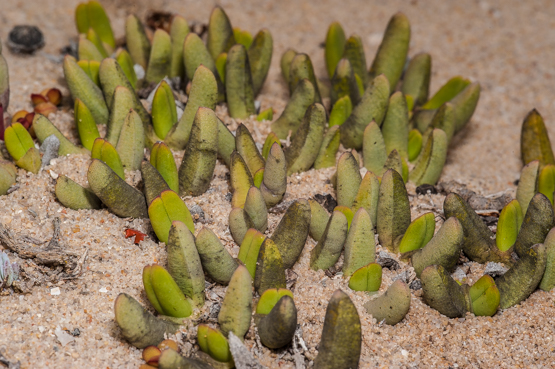
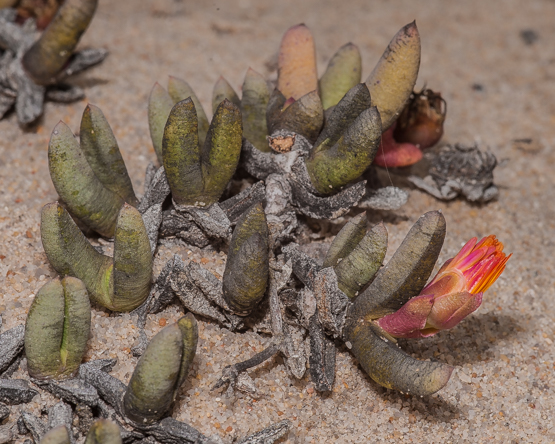
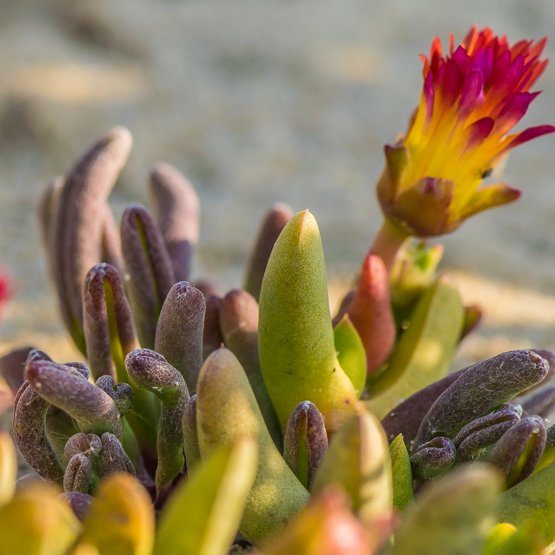
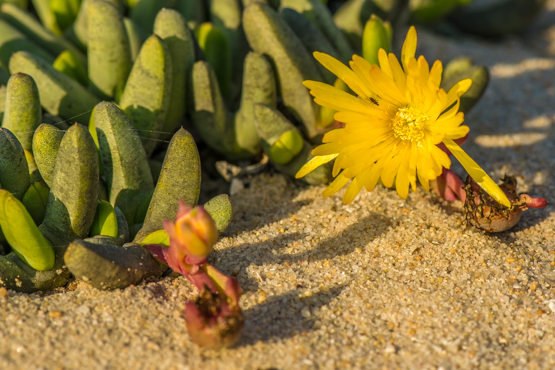
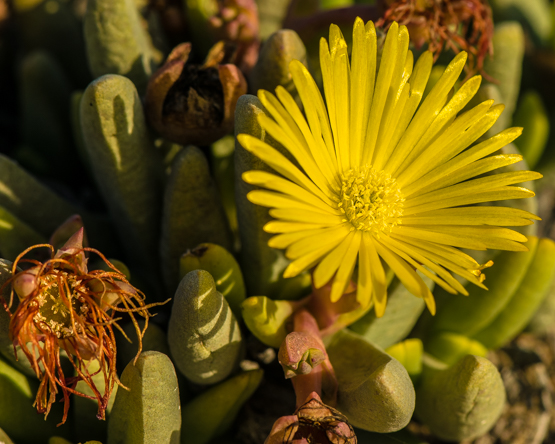
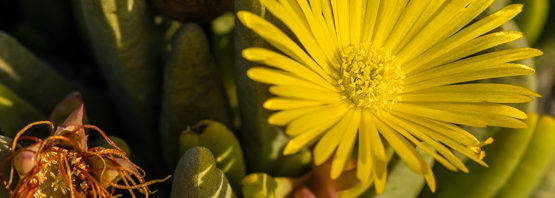
This is interesting. I have seen something very similar in the Karoo National Botanic Garden in Worcester, and in Logan’s Garden in Matjiesfontein in the past three weeks. I have posted on the blogsites and may pick up on this species in particular. I look forward to hearing from you.
Thanks for your comment. I wonder if what you have seen is not Ceph. curtopyllum, which occurs in that general area. Have a look at my post on that species.